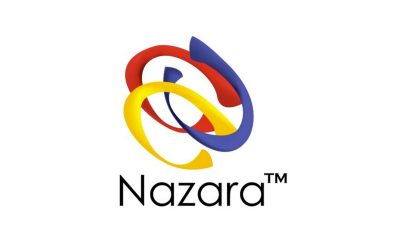Latest News
Myth-Busting UNLV Study Reveals that Gamblers Can’t Detect Slot Machine Payout Percentages
 Reading Time: 3 minutes
Reading Time: 3 minutes
As casino operators optimize the house advantage, a new UNLV study contradicts long-held beliefs about a player’s ability to detect differences in how much – and how often – a slot machine pays.
It’s a common sight on casino floors: patrons jumping from slot machine to slot machine before eventually hunkering down at a game that’s due for the next big payout. But can players – even the regulars who frequent a particular property – really tell the difference between the house edge on one game from that of another?
Nope. At least not according to a series of recent studies led by Anthony Lucas, a UNLV Hospitality College professor and former gaming industry operations analyst.
For the past several years, Lucas and colleague Katherine Spilde from San Diego State University have taken to casino floors on multiple properties in the U.S., Australia, and Mexico to investigate. Their results contradict long-held beliefs by casino operators about a player’s ability to detect differences in how much – and how often – a slot machine pays.
“I think some operators are naturally and understandably cautious of new information that challenges traditional industry practices,” said Lucas. “But we must consider how we know what we know. This is where our work takes on a Moneyball-like aspect – questioning the wisdom of widely held beliefs when data show that a new way of thinking may be better.”
In their latest study, the UNLV-led research team compared two pairs of reel slot games at a “locals” casino in suburban Sydney, Australia, where all wagering occurs on electronic gaming devices.
Their process is relatively straightforward: take two identical slot machines, positioned in similar places on a casino floor, but vary the par – the percent of total coin-in that the machine keeps over time. For example, if the par on a game is set at 10 percent, the machine would be expected to retain $10 of every $100 wagered, on average, over the long term. But in the short term, this rarely happens, increasing the difficulty of par detection.
For this study, researchers compared the daily performance of pairings for the games “Tokyo Rose” and “Dragon’s Fortune X” over a nine-month period. The pars within each pairing ranged from 7.98 percent on the low end to 14.93 percent on the high end.
Researchers measured daily coin-in for each machine as well as its T-win, a formula that multiplies coin-in and par to calculate a machine’s expected value, or its theoretical win. If, over the course of the nine-month test, regular players could detect a difference in the pars, this comparison would reveal whether (and how much) players migrated from higher par to lower par games.
As Lucas predicted, differences between the high and low par games remained stable throughout the length of the study, which meant that there was no statistically significant indication of play migration.
And while the lower par machines had more coin-in over the course of the study period, the T-win was greater on average for the high par machines. The positive impact from the elevated T-win on revenue for the higher par machines more than compensated for the decline in coin-in on those machines.
“Casino operators should take note of the substantial increases in T-win, as they are responsible for optimizing revenues, not coin-in,” said Lucas.
The results were also consistent with findings from the team’s previous studies, which analyzed 11 pairs of games over 180 days at gaming properties in U.S., Mexico and Australia.
So, other than busting one of gaming’s great myths, why does this matter?
Pars are an important factor for casinos looking to optimize revenues, as the bulk of slot revenues come from reel slots, and a lion’s share of a casino’s overall profits come from slot operations. While there are exceptions to this rule, it is true for most of the world’s casinos.
“Ultimately, operators are responsible for optimizing slot revenues, which is no simple task,” Lucas said. “Knowing which par will produce the greatest win is most helpful, but the optimization issue becomes more complex when the possibility of player detection is introduced.”
That’s where industry perspective is mixed, as operators have expressed concerns that short-term gains from higher pars could lead to long-term losses as players leave perceived “tight” slot floors for the greener pastures of their competitors.
To account for this concern, researchers extended length of time from previous work, from six months to nine months. They also expanded the difference in pars between matched pairs from 4.9 percent in the initial study to 6.95 percent in the current study.
In a concurrent study, the researchers compared the Australian data with four, two-game pairings at two similarly situated casinos in Mexico. Par differences for those games were even more drastic – ranging from 7.98 to 8.9 percent.
Despite these factors, in both instances the results still found no evidence of players moving away from higher-par machines to their low-par counterparts, and the high-par games continued to post substantially greater revenues.
“Put simply, our results suggest that greater pars produce greater revenues, without the risk of brand damage resulting from ‘price’ detection,” Lucas said.
Full Study
The study, “Impacts of increased house advantages on reel slots,” was recently published online in the International Journal of Contemporary Hospitality Management.
Source: Latest News on European Gaming Media Network
This is a Syndicated News piece. Photo credits or photo sources can be found on the source article: Myth-Busting UNLV Study Reveals that Gamblers Can’t Detect Slot Machine Payout Percentages

Latest News
THE 2025 PUBG MOBILE GLOBAL CHAMPIONSHIP GROUP STAGE WRAPS UP WITH LAST CHANCE IN SIGHT
Reading Time: 3 minutes
- The 2025 PUBG MOBILE Global Championship (PMGC) Group Stage concluded yesterday, with six teams qualifying for the Grand Finals after an intense run of clashes
- Alpha Gaming dominated in Group Green, while DRX were at the top of the leaderboard for Group Red
- Sixteen teams from the Group Stage will now battle their way through the Last Chance Stage, where they’ll fight to secure a coveted spot in the Grand Finals
- With three slots left for the Grand Finals in Bangkok, time is running out for the remaining teams to vie for a share of the $3M prize pool
The Group Stage of the 2025 PUBG MOBILE Global Championship (PMGC) has come to a thrilling close, following six days of high-stakes competition. The top three teams from Group Green and Group Red have earned a one-way ticket to the Grand Finals, whilst the remaining 16 teams that ranked 4th – 11th from both groups are set to contend in the Last Chance Stage taking place from December 6th – 7th, in a final push for survival. With $3,000,000 up for grabs, the winning team at the Grand Finals in Bangkok will claim the lion’s share of the prize pool, along with the coveted title, making every match a battle for glory.
Day one of the Group Stage began with Group Green, kicking off with Inner Circle Esports making a strong statement with an early chicken dinner and an incredible 18 eliminations, setting the pace for the group. Day two saw continued strong performances from Alpha Gaming, Alter Ego, and Team GOAT, taking the top three spots respectively. On day three, Alpha Gaming demonstrated consistency throughout the day, with a 12-elimination victory providing a solid boost, allowing them to end the day in the top spot with 174 points. At the end of the Group Green matches, Alpha Gaming, Dplus, and Team GOAT secured their spot to advance directly to the Grand Finals, leaving the mid-pack teams to fight for survival in the Last Chance Stage.
Group Red matched the intensity, delivering three days of high-stakes matches and tactical play. Day one began with EArena from Thailand taking an early win with 65 points and one Chicken Dinner, signaling their intent to remain top of the rank. Day two featured unexpected twists, with Regnum Carya and Team Flash executing key plays to climb the leaderboard. Maintaining their status, South Korea’s DRX locked in a top-three finish on day three with five Chicken Dinners, joined by Regnum Carya and EArena, clinching direct passage to the Grand Finals.
The Last Chance stage of the 2025 PMGC will see 16 teams, made up of those that placed 4th – 11th from both groups of the Group Stage, go head-to-head in twelve points-based matches over two days. The top two teams in the final standings will secure the remaining slots in the Grand Finals, while the other 14 teams will be eliminated from the tournament. Every match will put everything on the line as teams battle for a final shot to contend in the most prestigious PUBG MOBILE Esports tournament of the year.
Teams heading to the Last Chance Stage:
- Team Flash
- Weibo Gaming
- Influence Rage
- Arcred
- Burmese Ghouls
- Alliance
- Geekay Esports
- Boars Gaming
- Wolves Esports
- Inner Circle
- Team Gen G
- Loops Esports
- Alter Ego
- Team Falcons
- Papara Supermassive
- Team 9ZG
2025 PMGC Key Dates
- PMGC Last Chance (December 6th – 7th)
- PMGC Grand Finals (December 12th – 14th)
As the pinnacle of the competitive season, the 2025 PMGC in Bangkok stands as the ultimate proving ground for the world’s top PUBG MOBILE Esports teams. This year marks a new chapter for the scene, uniting the 2025 PMGC with the 2025 PUBG Global Championship (PGC) under the groundbreaking banner of PUBG UNITED 2025. By ending the year with its most prestigious event, PUBG MOBILE Esports not only celebrates the year’s finest talent, but also sets a forward-looking momentum that will shape the competitive landscape of the year ahead.
For more information on the 2025 PMGC, fans can keep up to date on PUBG MOBILE Esports’ YouTube, Facebook and Twitch channels. For more PUBG MOBILE Esports news, stay tuned on Facebook, Instagram, Twitter, Youtube, and TikTok.
The post THE 2025 PUBG MOBILE GLOBAL CHAMPIONSHIP GROUP STAGE WRAPS UP WITH LAST CHANCE IN SIGHT appeared first on European Gaming Industry News.
Latest News
PayRam Unveils Private Stablecoin Payment Gateway Built for iGaming
PayRamnt-weight: 400;”> has launched its private stablecoin payment gateway for iGaming operators, gaming platforms, and affiliates that require fast, borderless, and censorship-resistant payments.
Built on the belief that payments should operate as freely as the internet itself, PayRam delivers decentralized PayFi infrastructure that allows iGaming businesses to accept and manage stablecoin payments through fully self-hosted infrastructure. Operators no longer rely on banks, custodians, or centralized processors to control their revenue.
In an industry plagued by frozen balances, chargebacks, delayed settlements, and compliance shutdowns, PayRam gives operators direct control over funds, payouts, and transaction infrastructure. Platforms retain ownership of their payment flow without platform risk. Operators can now accept private stablecoin deposits, launch without intermediaries, and expand globally on their own terms.
Stablecoins Are the Future of Global iGaming Payments
Stablecoins now drive the most significant transformation in payments in decades. With a market capitalization exceeding $300 billion, stablecoins now function as real-world settlement infrastructure rather than speculative assets. For iGaming businesses that operate across borders, stablecoins deliver instant payouts, low transaction costs, and continuous global liquidity.
Governments also continue to formalize regulatory frameworks. Initiatives such as the GENIUS Bill in the United States signal that stablecoins will soon function as foundational financial infrastructure for both traditional commerce and emerging agent-driven economies.
Yet most existing stablecoin fiat gateways still copy legacy banking structures. They custodian funds, over-monitor transactions, delay settlements, and restrict high-risk industries such as iGaming. Operators continue to face frozen balances, withheld profits, and sudden account closures.
Instead of decentralizing commerce, centralized processors reintroduce single points of failure. They strip merchants of privacy, predictability, and true ownership of funds.
PayRam removes these bottlenecks by allowing iGaming operators to deploy and operate their own self-hosted stablecoin payment nodes. This sovereign infrastructure restores payment autonomy, protects funds from blacklisting, enables private deposits, and eliminates third-party revenue risk.
Permissionless Commerce Underpinned By Privacy
PayRam embodies a mission to decentralize the global payments ecosystem. Its founder, Siddharth Menon, who previously co-founded WazirX, India’s largest cryptocurrency exchange, helped bring crypto to more than 15 million users. Today, he’s channeling that experience into building a decentralized PayFi layer engineered for privacy, autonomy, and self-custody.
“The future of payments is decentralized stablecoin payments. As the world moves beyond custodial systems, PayRam is building the foundation for permissionless commerce, where every merchant, creator, or platform can host and own their own payment infrastructure,” said Siddharth Menon, Founder of PayRam. “Just as Uniswap reimagined trading through decentralization, PayRam is reimagining how money moves across the internet.”
iGaming Operators Go Live in Minutes and Expand Into Underserved Regions
PayRam removes all onboarding friction. Operators need no approvals, no vetting, and no centralized onboarding process. Any business can deploy PayRam, configure it, and begin processing private stablecoin payments within 10 minutes.
This instant deployment allows operators to enter underserved and payment-restricted regions, unlock new player bases, and launch real-money gaming operations without waiting on banks, payment processors, or jurisdictional approvals.
PayRam is built as a merchant-first ecosystem, offering advanced accounting analytics, scalable APIs, and automated payments orchestration tools. It also arrives with integrated growth tools like referral and payout systems. Merchants and individuals can issue payment requests, share unique payment links, and monitor transactions through programmable APIs, all operated on infrastructure that users self-host and fully control. The built-in SmartSweep feature uses a family of smart contracts to move funds securely and periodically, eliminating the need to store private keys on servers.
PayRam supports stablecoin and cryptocurrency payments across major networks including Bitcoin, Ethereum, Base, and Tron, with integrations for Polygon, BNB Smart Chain, Solana, Ripple, Monero, and TON next in line.
“We’ve used several crypto payment providers over the years, including BTCPay Server, NOWPayments, and others, but PayRam stands out as truly open and built for the modern internet economy. It gives us full control over our payments and funds, along with stablecoin support, privacy, multi-chain flexibility, and faster global settlements,” said an iGaming operator using PayRam.
PayRam Prepares to Support Agentic Betting With Privacy and Automation
Agentic betting represents the next evolution of iGaming, where autonomous software agents will place bets, execute strategies, manage bankrolls, and settle wagers in real time without human intervention. These systems already power algorithmic trading in financial markets, and iGaming infrastructure now begins to move in the same direction.
Most existing betting and payment infrastructure cannot support this shift. Centralized processors expose transaction logic, restrict automated flows, and introduce settlement delays that break agent-driven wagering models at scale.
PayRam is actively adopting the foundational standards and infrastructure required to support agentic betting in the future. The platform is positioning itself as a privacy-first, decentralized payment layer that will allow autonomous betting systems to operate with:
- Private stablecoin deposits
- Real-time settlement logic
- Automated treasury and bankroll flows
- Programmable payout execution
- Full self-custody and non-custodial risk isolation
By preparing to adopt open standards such as x402 and ERC-8004, PayRam aims to support interoperable and intelligent payment flows between autonomous betting systems, sportsbooks, and gaming platforms when the agentic wagering ecosystem reaches production maturity.
Through this approach, PayRam is building the foundation for a future where payments are private, programmable, and permissionless.
About PayRam
PayRam is the world’s first self-hosted private stablecoin processor, giving merchants and individuals complete control over their payments stack. Built for the next era of permissionless commerce, it merges stablecoin payments with self-hosted infrastructure to enable borderless, censorship-resistant transactions.
Latest News
Week 49/2025 slot games releases
Reading Time: 5 minutes
Here are this weeks latest slots releases compiled by European Gaming
BGaming gets in the festive spirit with a Christmas take on its acclaimed casual hit, Aviamasters, with Aviamasters X-Mas. Santa and his sleigh replace the plane from the original title, with players watching as he flies through the air, collecting festive multipliers before hopefully landing on an ice floe to collect his prizes.
Stakelogic is spreading festive cheer this December with the release of Big Sugar Bonanza Xmas, a delicious sequel of the candy-coated hit, Big Sugar Bonanza. Launching on 1st December 2025, the new game transforms the Fluffkins’ sugary kingdom into a winter wonderland of treats and turbo-charged multipliers.
Million Games is bringing festive mayhem to the iGaming world with the launch of Rudolph’s Gone Rogue, a fast-paced Christmas slot where Santa’s most famous reindeer takes centre stage in a runaway holiday adventure. In this 5×3, 20-payline slot, Rudolph bolts into the night sky, dragging the rest of the herd with him and leaving a trail of chaos in his wake.
Spinomenal has unwrapped its new title Majestic Santa, signalling the start of the festive season. Spinomenal’s festive-inspired treat is a 5×3 slot that is bursting with Christmas imagery including red stockings, gingerbread men, and glistening golden bells.
Evoplay has launched Mega Greatest Catch: Blue Marlin, bringing the fearless fisherman Harry back to sea for his most exciting adventure yet. The latest instalment transports players to bright turquoise waters, where random scatters can trigger free spins, wilds appear unexpectedly, and the scatter respin feature offers a welcome second chance to enter the round.
Looking to unwrap longer sessions, stronger engagement and bigger revenues this Christmas? ICONIC21, in-demand iGaming content provider, just launched Sweet Royale Xmas ahead of the holiday season. Sweet Royale is one of the provider’s most popular slots to date and now returns in a Christmas edition decked with boughs of candy to allow operators to leverage the rise in slotting activity during the festive period.
Meet Nolimit City’s latest Crazy Ex-Girlfriend…the kind ex who would “accidentally” like your 2014 selfie at 3am and has a little voodoo doll named after you. Crazy Ex-Girlfriend has mapped out your every move and runs through a 2-4-4-4-4-2 layout across 6 reels.
It’s the most magical time of the year, but don’t expect a peaceful Christmas with the release of Realistic Games’ latest blockbuster slot, Wreckmas. The new 5×3, feature-packed slot brings toppled trees, tangled tinsel and chaotic carols to a family Christmas, along with the chance to hit a 5,000x max win.
Players can jingle their way to jackpot joy in Christmas MegapotsTM from Big Time Gaming. This festive slot brings Big Time Gaming’s legendary Megapots mechanic to life with seasonal sparkle, giving players the chance to unwrap Mini, Midi or Mega Jackpots with each spin.
Players are being commanded to raise the sails and brace themselves for a high seas adventure like no other in Captain WinBreaker, the latest swashbuckling slot from Northern Lights Gaming. This pirate-themed slot sees players take the helm of a ship bound for treasures and untold riches.
Amusnet has released 20 Burning Hot Buy Bonus, a sizzling twist on the classic fruit slot. Set across 5 reels and 3 lines, this game combines familiar symbols with modern mechanics for fast-paced spins, vibrant visuals and nonstop excitement.
SlotMatrix is embracing the holiday season with Santa’s Golden Christmas, a sparkling new slot packed with festive cheer, golden prizes, and heart-warming holiday magic. Set in a winter wonderland, the game brings players closer to the jolly gift-giver.
Inspired Entertainment, Inc. is thrilled to announce the exclusive launch of its brand-new, bespoke slot game, Spin O’Reely Grand Chance, in collaboration with long time partners bet365. Expanding bet365’s popular exclusive Irish-themed Spin O’Reely game series, the game will initially be available to players in the UK, Ontario, and New Jersey, with more markets to follow soon.
Play’n GO pits sun god Ra against serpent deity Apophis in Ra’s Reckoning, a mythic grid slot inspired by the celestial battles of ancient Egypt. Ra’s Reckoning brings players face to face with an age-old mythic struggle – the eternal duel between light and chaos.
Playson has unleashed a whirlwind of excitement with Tornado Power: Hold and Win, introducing a new Tornado Feature and enhanced payouts. The 3×4, 10 payline slot features immersive visuals with old-school charm, as the untamed gameplay is further enhanced by a new Tornado Feature
ELA Games announces the release of its latest title, Joker Jam, a bold visual addition to the studio’s growing portfolio of strategic yet aesthetic games. Set under the neon glow of a vibrant city, Joker Jam reimagines the classic Vegas aesthetic into a thrilling experience.
Just Slots has announced the exclusive launch of its newest title, Dynamo’s Show, available on Gamdom and Stake. A full network release will follow on 11 December 2025. This vibrant new slot transforms the classic Hold & Collect experience into a full theatrical performance
Spinomenal is celebrating the holiday season by inviting players for a festive journey with The North Star Express – Hold & Hit 3×3. Unfolding against a wintry backdrop, North Star Express arrives to present a fun, festive adventure as players race through snowy forests.
Belatra Games, the specialist online slots developer, has rolled out the red carpet to the Frozen Barrel Tavern to celebrate the festive season. Players are warmly welcomed into a cosy winter tavern that radiates holiday cheer and buzzes with Christmas chatter.
The post Week 49/2025 slot games releases appeared first on European Gaming Industry News.
-
Latest News2 months ago
Announcement: 25th September 2025
-
Latest News3 months ago
GR8 Tech’s Bet It Drives Wraps Season 1 with Stephen Crystal—From Las Vegas Legends to Global Gaming Leadership
-
Latest News3 months ago
AI-Powered Gamification Arrives on Vegangster Platform via Smartico
-
Latest News4 weeks ago
JioBLAST Launches All Stars vs India powered by Campa Energy: A New Era of Creator-Driven Esports Entertainment
-
Latest News2 months ago
The Countdown is On: Less Than 3 Months to Go Until The Games of The Future 2025 Kicks Off in Abu Dhabi
-
eSports3 weeks ago
CS:GO Betting Gains Momentum in the iGaming Sector
-
Latest News3 months ago
Adidas Arena Set to Welcome the 2026 Six Invitational
-
Latest News3 months ago
LiveScore Group announces transformational partnership with X and xAI to drive the future of integrated sports media and betting















You must be logged in to post a comment Login